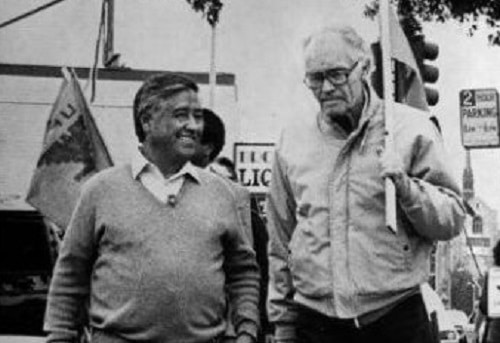Film. By Adam Jonas Horowitz. 2012. 60 and 87 minutes.
History of the U.S. government's testing of nuclear weapons and fallout on the people of the Marshall Islands.
Continue reading
Film. Center for Investigative Reporting and Two Tone Productions. 2007. 84 minutes.
Filmmaker Marco Williams examined four examples of primarily white communities violently rising up to force their African-American neighbors to flee town.
Continue reading
The United States dropped an atomic bomb for the first time in war over the Japanese city of Hiroshima.
Continue reading
Billie Holiday was a legendary jazz singer and songwriter. Also born today, Harry Hay and Daniel Ellsberg.
Continue reading
The Ku Klux Klan bombed the home of labor and voting rights activists Harry T. Moore and Harriette Moore — killing them both. Harriette Moore taught elementary school, secretly teaching her students Black history in the face of bans by the state superintendent.
Continue reading
Democratically elected Guatemalan president Jacobo Árbenz Guzmán was deposed in a CIA-sponsored coup.
Continue reading
Four African-American North Carolina A&T University students began a sit-in protest at a Woolworth’s whites-only lunch counter.
Continue reading
Peaceful protesters formed a picket line at the House on Un-American Activities Committee hearings.
Continue reading
Barbara Johns (16-years-old) led her classmates in a strike to protest the substandard conditions in Prince Edward County, Virginia.
Continue reading
Patricia Stephens Due refused to pay bail after being arrested for a sit-in in Florida.
Continue reading
Mr. Willie Edwards Jr., a 24-year-old African American man, was murdered by members of the Alabama KKK.
Continue reading
South Carolina NAACP held Greenville Airport Protest in support of Jackie Robinson.
Continue reading
The African National Congress called on parents to withdraw their children from schools to resist the 1953 Bantu Education Act.
Continue reading
26,000 high school and college students came to Washington, D.C. to demand the end of segregated schools.
Continue reading
Book — Non-fiction. By M.J. O'Brien. 2014. 340 pages.
An up-close study of the story behind the iconic photographs of the Jackson, Mississippi sit-ins.
Teaching Activity by M.J. O'Brien
Continue reading
Book — Non-fiction. Edited by Stewart Burns 1997. 392 pages.
A documentary history of the Montgomery bus boycott that reverberates with the voices of those closest to the boycott.
Continue reading
Book — Non-fiction. Edited by Leslie G. Kelen. 2012. 256 pages.
Presents the Civil Rights Movement through the work of nine activist photographers who lived within the movement and documented its activities by focusing on the student activists and local people who together made it happen.
Continue reading
SCOTUS ruled against Jim Crow segregation on interstate commerce in Morgan v. Commonwealth of Virginia, leading to Journey of Reconciliation Freedom Rides.
Continue reading
The Viet Minh scored their final victory over the French at Dien Bien Phu.
Continue reading
After decades of organizing and strategic efforts by parents, teachers, lawyers, and more — the U.S. Supreme Court issued the unanimous decision in Brown v. Board of Education on school segregation.
Continue reading
Ernest Green became the first African-American to graduate from Little Rock Central High School in 1958.
Continue reading
The Supreme Court ruled in favor of the plaintiffs in three cases that weakened the structure of legalized segregation.
Continue reading
Joseph N. Welch confronted Sen. Joseph McCarthy about allegations of communists in the U.S. Army.
Continue reading

























